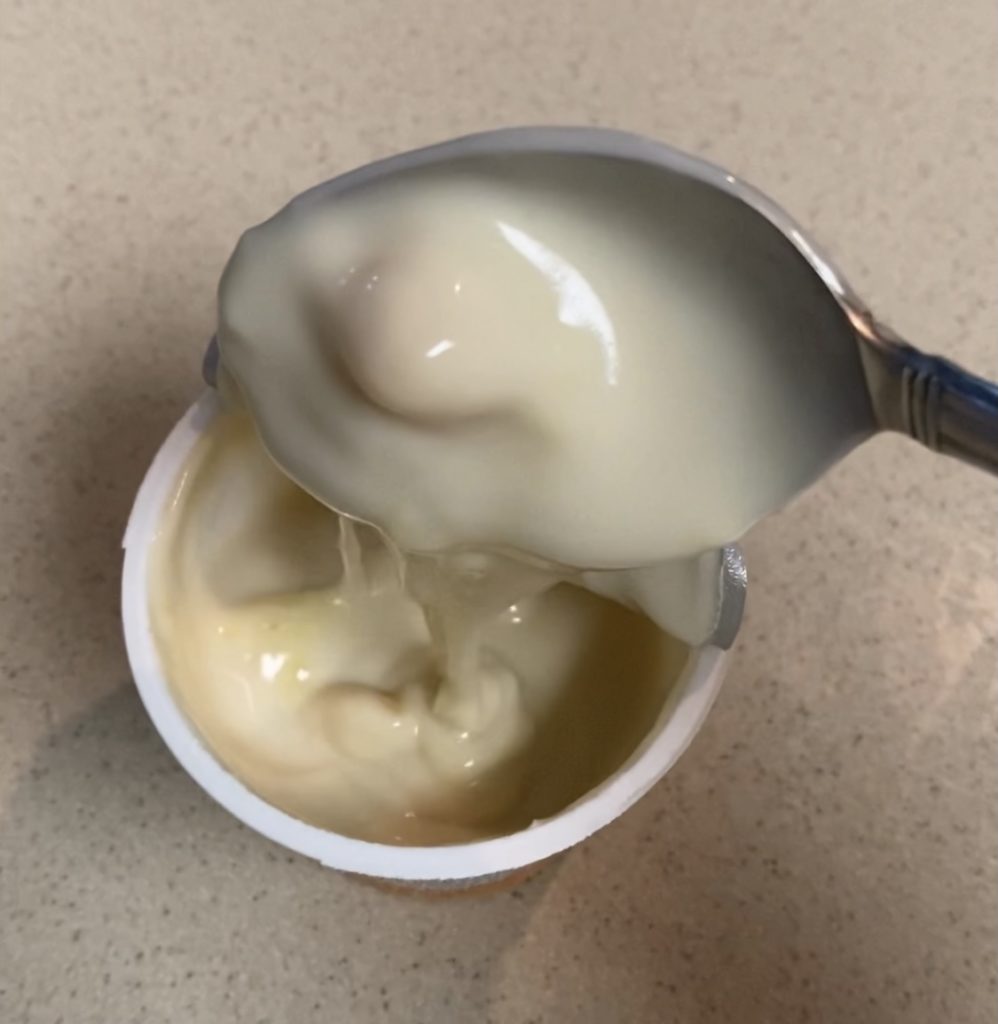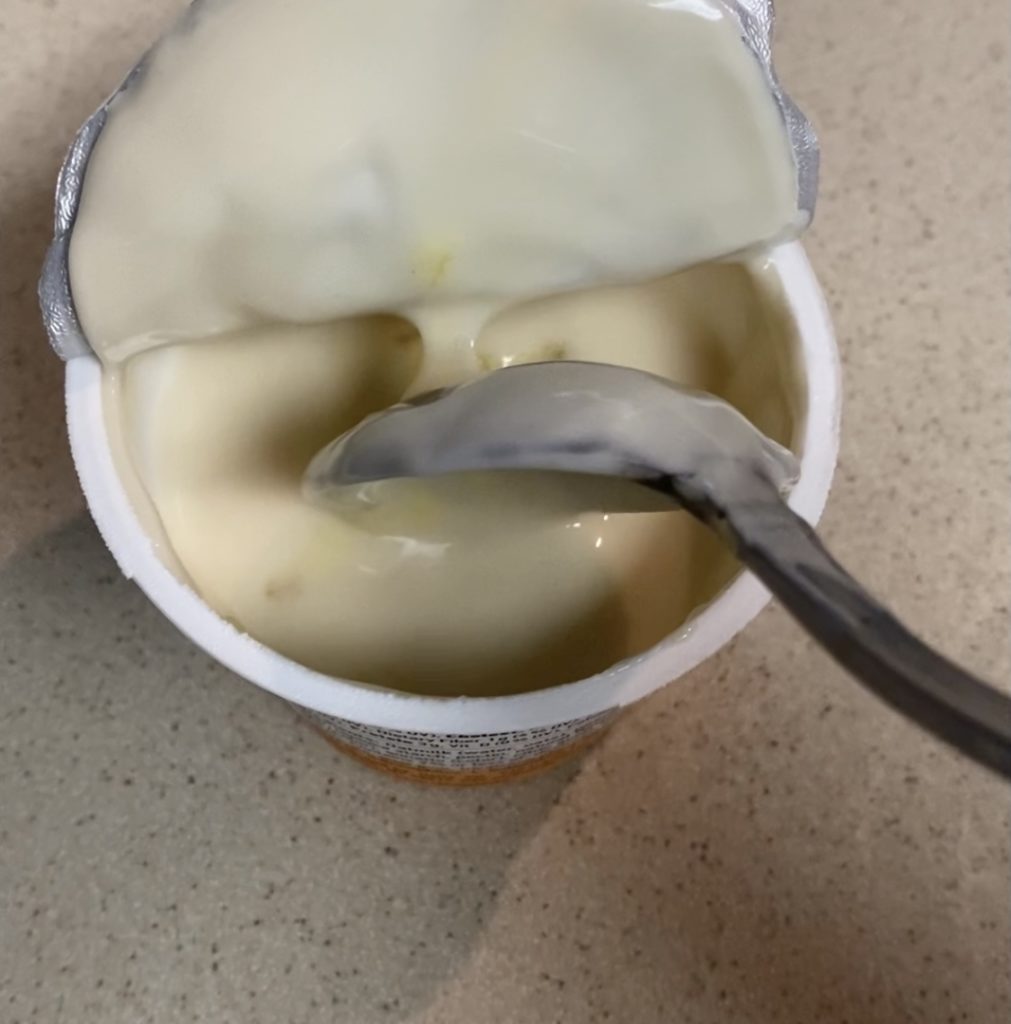Oat milk is the new popular kid at the plant milk school.
Every brand is making their own “oaty” version now, from Califia to Trader Joe’s. But one brand is working harder than the rest to come out on top: Oatly.

This article will include:
- A review of their oat milk, ice cream, and yogurt
- Nutrition and ingredient analysis
- A deep dive into Oatly and their scandals
- My overall thoughts and recommendations
To keep this post from being a billion hours of reading, I will not include ethics or environmental discussions or nutrient comparisons of other plant milks. If y’all want me to address those issues in separate posts, let me know in the comments!
Now on to my review (since that’s what most of y’all care about)…
Don’t like to read? Watch my video:
Table of Contents
My review
Cost & Flavor
Cost – 3/5
Because I am poor and not famous enough to get free samples, I only purchased three items:
Original Oatly (64 oz @$5.99)

Mint and Chip Frozen Dessert (16 oz @$4.99)

Oatgurt peach (5.3 oz @$1.99).

I understand that use of non-subsidized and costly ingredients will jack up Oatly’s price in comparison with cow milk, but this stuff is expensive y’all.
I could purchase double the amount of milk (128 oz), a pint of mint n’ chip ice cream, and one peach yogurt (from other brands) for $7.95 vs. Oatly’s cost of $12.97.

This won’t matter to people with lots of money, but there are millions of Americans who just can’t afford these products.
Unless the process of making oat milk is super expensive, the ingredients alone don’t justify the price. Oats, water, canola oil, gums, and synthetic vitamins are all cheap.
Oatly is about $2 more than its plant milk relatives, such as soy and almond milks. However, when compared to oat milk brands, it’s more expensive than Silk but less expensive than Califia.
Flavor – it depends
Original Oatmilk – 5/5
This stuff was DELICIOUS. Hands down, it was the best-tasting plant milk I have ever tried. And I’ve tried a lot! Keep in mind, I love oats in general, so I could be bias.
It was smooth and creamy with a satisfying mouthfeel, as opposed to most watery plant milks. The flavor was light and not overpowering, with a faint aftertaste of nutty oats.

I could see why people have become cult-ish about this drink.
Mint and Chip Frozen Dessert – 4/5
This dessert was not good enough to replace ice cream for me. However, it was definitely enjoyable enough to be a satisfactory alternative if necessary.
The mint flavor was bright and refreshing, very similar to regular ice cream. Again, there was a faint aftertaste of oats, which I personally enjoyed. While the chocolate chips added a nice choco accent, they were extremely dry and crunchy.
The ice cream consistency, while mostly creamy, was slightly icy.
Overall, a very tasty alternative to ice cream if you need it!
Oatgurt Peach – 0/5
I am NOT a picky person. It is rare that I despise a food so much that I refuse to eat it. This was one of those rare foods.
I got scared the second I opened it. The color was off-putting, like old white paint in a house where the resident smoked for 50 years. When I dipped my spoon in, I became terrified.
It was runny and appeared to be sticky and goopy like watery wallpaper paste. But I, willing to do anything for my readers, took the risk and tasted it.
NOPE. Disgusting. Horrible.
This tasted like oat-sick. If oats could get the flu and expel various fluids into a cup, this was it. It was sour, chalky, stringy, and mucus-like. The aftertaste was indescribable.
It literally gave me the chills.
Also there was one chunk of peach in it. One.
I would never try this again.
Marketing – 2/5
Their marketing tone is pretty in-line with with the usual, “I’m trying so hard to be funny, hip, and casual that I’m coming off like your tragically un-hip uncle who’s trying to be like the cool kids” marketing tactics of the 2020s.
A blurb from their website below.

Dear Oatly, “beta glucan” is not a “big, scientific word.” You know what is? Pneumonoultramicroscopicsilicovolanoniosis.
I could ignore the attempt at “cool kid” talk if it weren’t for the biggest cringe-factor of all: Their CEO, Toni Petersson.

No offense Toni! You might be the nicest person in the world! But I, like many people, find narcissism unappealing.
And what’s more narcissistic than launching an entire marketing campaign focusing on you rather than the product?
Examples:
- The now infamous and cringe-inducing Super Bowl commercial, starring Toni!
- My Oatly milk carton sporting a cartoon of Toni sleeping on a couch. Under the pic is a paragraph talking about, you guessed it, how great Toni is. It ends with “#toni4prez.” The cartoons are apparently collectable…
- My ice cream container lid that included a limited edition signature from…yes. Toni.
Evidence:
WHAT IN THE WHAT. If Toni invented Oatly, I wouldn’t be as harsh in my critique. But he didn’t join the company until a decade after Oatly’s creation.
I just can’t imagine the marketing team saying, “Instead of us marketing our super cool product created by an actual food scientist, let’s shove our CEO who nobody knows, nobody cares about, and didn’t even create the product down everyone’s throats. The public loves CEOs!”
Gross. Someone needs to end this.
The only reason they’re getting two points is because I love the packaging design (as you saw above).
Nutrition comparison
I made this easy-peasy graphic for y’all to visualize the nutrient differences between Oatly and cow’s milk.
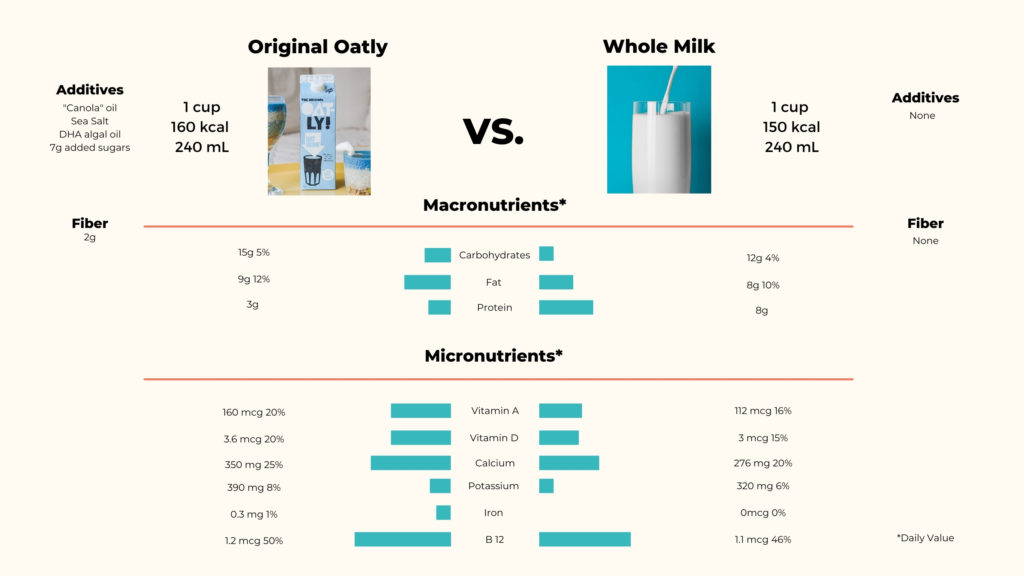
Where Oatly “wins”
Micronutrients
As you can see, Oatly is slightly higher in all micronutrients examined, almost suspiciously so. Micronutrients are easy to manipulate in foods, as you can simply adjust the amount of synthetic vitamins sprayed onto the product.
Having slightly more nutrients than a competitor’s product is a smart strategy. The product could then be marketed as, “containing more nutrients” than the competition, which gives it an advantage.
Smart move Oatly.
Though Oatly is slightly higher in micronutrients, the difference is not large enough to be significant. Additionally, most of the nutrients are added, where milk’s nutrients are naturally present (except for A&D).
Fiber
Oatly contains fiber, which is a huge win over fiber-free milk. Some of that fiber is soluble fiber in the form of beta glucans, which are naturally present in oats.
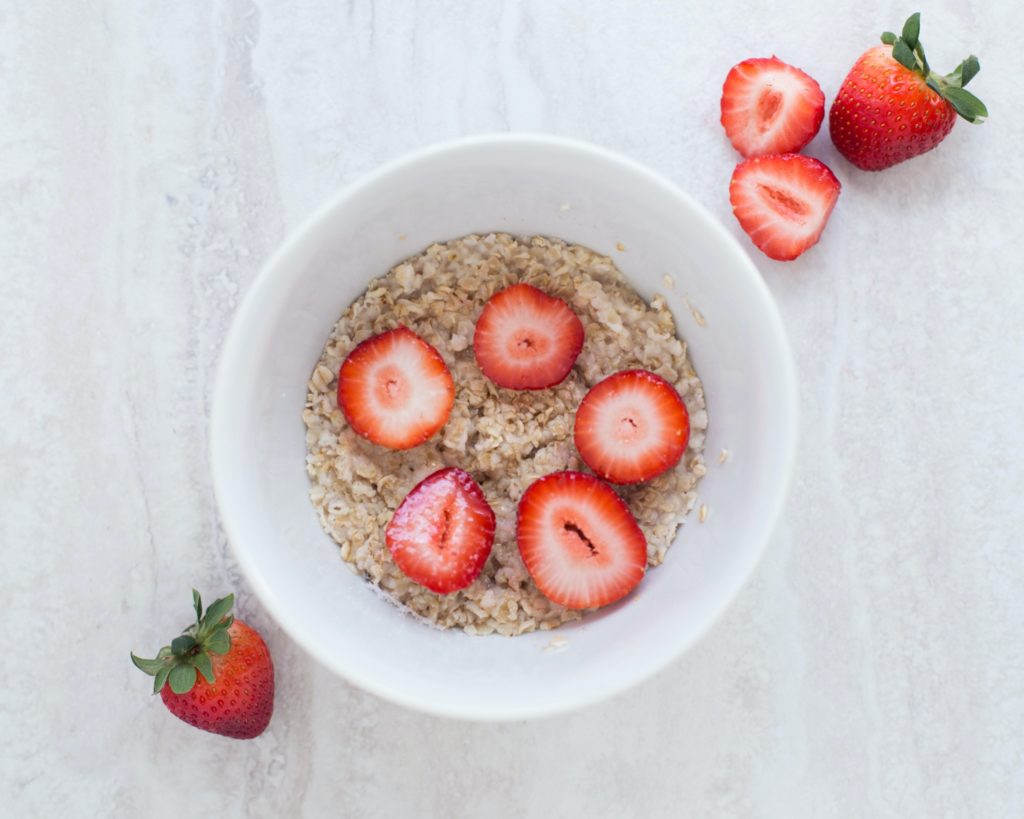
Thus far, there have been studies linking beta glucans with improving insulin resistance, cholesterol, blood pressure, and obesity.
God I love oats.
Where Oatly “loses”
Protein
Milk drop-kicks Oatly in the face with regards to protein. Not only does milk contain 70% more protein than Oatly, it also contains all nine essential amino acids.
Therefore, milk is a complete protein where Oatly is not.
Canola Oil
Canola oil helps to give Oatly the creamy mouthfeel mentioned in my review. They list it as, “low erucic acid rapeseed oil,” but that’s just a “big scientific term” for canola. Did ya see what I did there?
I do have a problem with this ingredient.
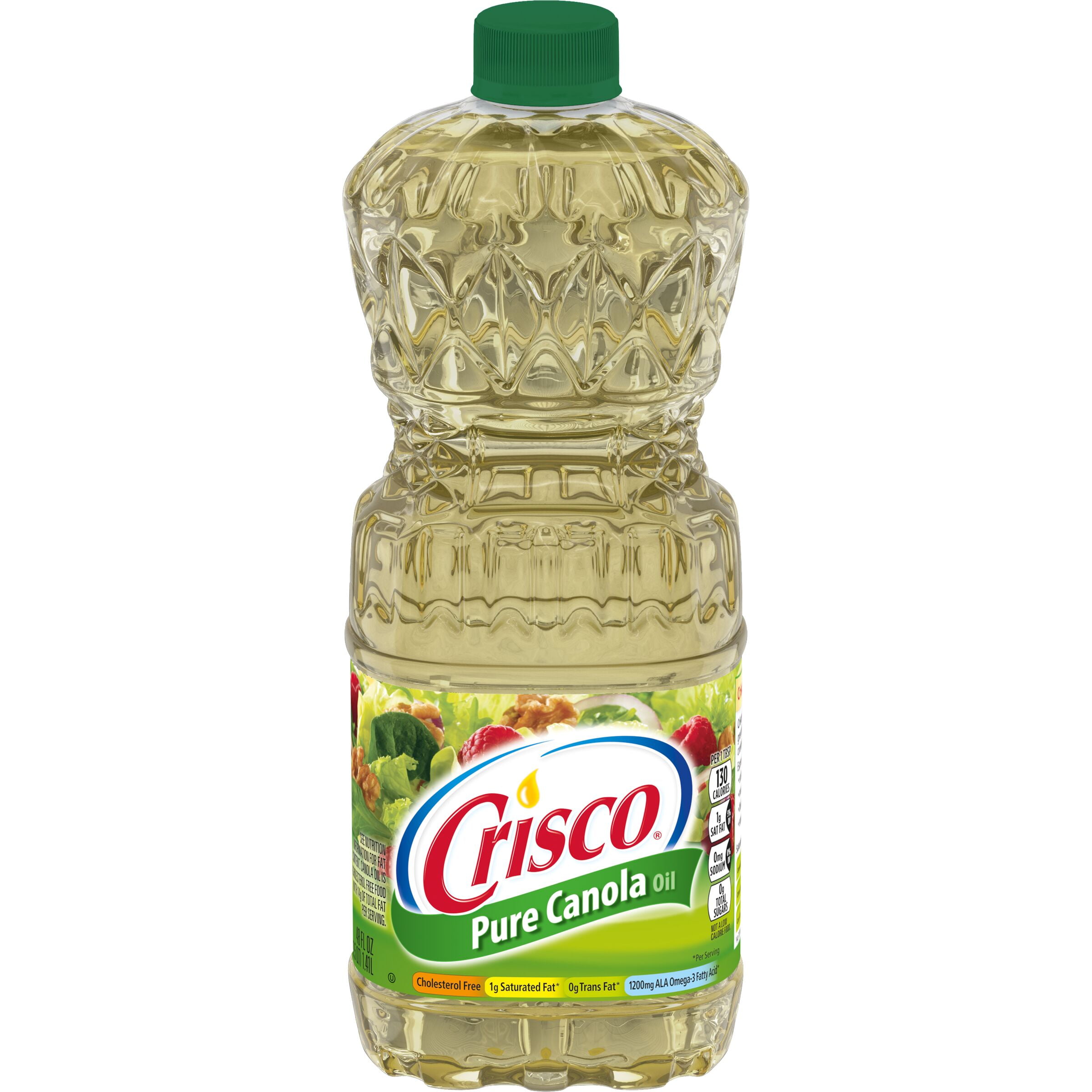
Canola oil is high in an essential fatty acid called omega-6. We need omega-6 in our diets, but Americans typically consume too many omega-6’s and not enough anti-inflammatory omega-3s to balance them out. If you’re someone who eats mostly whole foods and foods high in omega-3, you probably don’t have anything to worry about.
However, if you eat a lot of processed foods, vegetable oils, drink Oatly frequently, and don’t eat foods high in omega-3s, this could be a problem.
They do add algal oil, which contains some DHA (an omega 3). A few studies have shown it to be effective in raising serum omega-3s. BUT, given that it’s listed in the “2% or less” part of the ingredient list, it’s probably not enough to out-compete the omega-6 in the oil.
Thickeners and additives
To my knowledge, there is no current research reporting that thickeners are bad for you (though I should do a deep dive on them). I mention them because I’m comparing Oatly to milk, which does not contain any fillers or additives.
Thickeners and additives used in Oatly products are guar gum, gellan gum, locust bean gum, tapioca and potato starches, natural flavors (this could be anything), pea and potato proteins.
Overall, none of these ingredients raise any red flags for me. A quick analysis of gums revealed super rare allergic reactions and possible digestive upset, such as bloating, gas, and diarrhea.
Added sugars
Like many plant milks, Oatly adds sugar to increase palatability. While milk has a higher total amount of sugar than Oatly, it is from the naturally occurring sugar lactose.
Each cup of Oatly has about two teaspoons of added sugar. Keep this in mind if you’re adding Oatly to coffee already containing cream and sugar.

This has prompted some folks to compare Oatly to soda, which I don’t think is fair.
Soda is literally sugar, water, and flavorings. It has zero nutritive value. Additionally it does not contain fat, protein, or fiber to slow digestion and curb a blood sugar spike.
Oatly has fat, fiber, some protein, and is fortified with various nutrients. Additionally, Oatly has ~two teaspoons per cup vs Coca-Cola’s almost seven teaspoons per cup.
Who is Oatly?
Ok, now that you’re all caught up on their products, let’s chat about Oatly as an entity.
The company
Oatly, as you’ve hopefully realized at this point, makes alternative milk products from oats, such as oat milk (duh), ice cream, yogurt substitutes, custard, and cold coffee. They were actually the FIRST company to create oat milk.
Yup, they’re way older than you think.
Though you’ve probably only heard of Oatly in the last 5-ish years, it was founded in 1993 by a food scientist and his bro. The bro-team developed a now patented process of creating “milk” from oats at Lund University, making this a rare “health food” created by someone who actually understands food.
Super cool!

All of their products are certified kosher and vegan, non-GMO verified, and made with recycled materials (certified by the Sustainable Forestry Initiative). Oatly’s oats are certified gluten-free in the U.S. but not in Asia or Europe.
Oatly’s mission statement is to, “always deliver products that have maximum nutritional value and minimal environmental impact.”
This company has acquired an almost “cult-like” following of extremely devoted fans. The obsession was revealed in 2018 when an Oatly shortage caused many Starbucks-drinking hipsters to throw online tantrums.
This incident is now known as the “The Great Oat Milk Crisis of 2018.”
The scandals
As Oatly’s popularity increased, the typical scrutiny quickly followed. They’ve lost customers and experienced major backlash for some of their choices.
The Blackstone incident
In 2020 Oatly secured a $200-million investment in exchange for 10% stake in the company with the Blackstone private equity group.
Blackstone is headed by Stephen Schwartzman, who donated $3 million to Donald Trump’s re-election campaign. Additionally, Blackstone is connected with Brazilian companies linked to deforestation of the Amazonian rain forest. Blackstone denies this accusation.
Loyal customers were enraged at this partnership, accusing Oatly of business choices not inline with their mission statement of:
“We promise to be a good company which means that our drive to help people upgrade their lives always comes before the reckless pursuit of profit.”
Oatly responded with, “We understand that partnering with Blackstone is an unexpected choice, however through this partnership we are able to get the leading player in private equity to invest in sustainability and to align their goals and values with our own.”
The pig farming incident
Oat milk production results in a lot of leftover oat-crap. Humans don’t want that oat-crap, but apparently pigs will eat it.
In 2018 Oatly was criticized for selling its oat-crap to pig farms. Not only are pig farms un-vegan and, many would argue unethical, but they’re also bad for the environment.
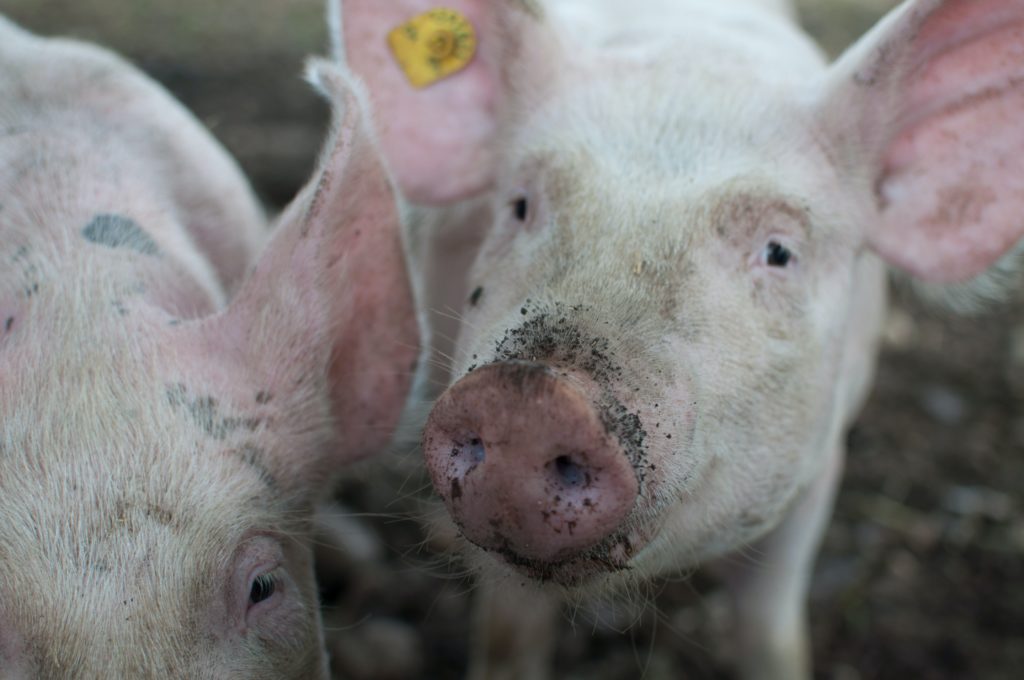
Again, customers believed this was in direct contradiction to Oatly’s claims of sustainability over profits and minimal environmental impact.
It also contradicted their mission statement of, “We believe we should eat stuff that we can grow instead of growing stuff to feed animals and then eat them.”
Oatly responded in 2018 with a promise to stop selling their oat-crap to pig farms in the near future. As of January 2020, Oatly admitted to continuing this practice with no end in sight.
The attacking small farms incident
Oatly took Glebe Farm Foods, a small family farm, to court alleging that its oat-based drink “PureOaty” infringed on Oatly’s trademark.
The court ruled in Glebe Farm Foods favor. I mean…what court wouldn’t? These don’t look similar at all!

I’m gonna side with the judge on this one.
The class action lawsuit incident
As of this year, a class action lawsuit was filed accusing Oatly of securities fraud. Oatly is accused of misleading shareholders by:
- Over-inflating its gross margins, revenue, capital expenditure, and market share financial metrics
- Overstating its sustainability practices and impact
- Exaggerating its growth in China
These are some serious accusations folks. However, they are only accusations as of now and are apparently common and usually dismissed.
We’ll have to wait to see how this plays out in court.
Final thoughts and recommendations
Do I, an amazingly powerful dietitian, think that Oatly is better for you than milk?
Nah. It would have to be significantly more nutritious overall for me to state that it is more nutritious. Oatly just doesn’t hit that target.

Certain micronutrients in Oatly are slightly higher than those in milk, but the difference is minimal.
Milk blows Oatly away with regards to A) providing significantly more protein B) being a complete protein and C) cost.
Oatly does have soluble fiber, which is freaking awesome. However, you need to drink two teaspoons of refined sugar, canola oil, gums, and additives to get those two grams of fiber.
I don’t like the addition of canola oil and wish they used a different type lower in omega-6. However, they probably use it because it’s cheap and doesn’t affect the flavor, which is understandable.
For those of you who worry about the fat content, they do have a low-fat option that does not contain canola oil! I would recommend this version over the original.

Oatly is a highly processed food when compared with milk. The oats undergo intensive processing to become a “milk”, sprayed with vitamins, and then mixed with all kinds of “fixins” and fluids to become the eventual beverage.
Is their product yummy? YES. Is it healthier than or as nutritious as cow milk? NOPE. Is it nutritious for a plant milk? YUP! Is it a good source of specific micronutrients? YUPPITY YUPPERS. Is it still a highly processed food? YES. Is it a good option for those who choose not to or cannot drink milk? YES. Would I recommend that people who CAN drink milk choose Oatly as a healthier alternative? NO.
What about the cost? TOO MUCH.
I would only recommend Oatly to those who are lactose-intolerant (and don’t like lactose-free milk), have a milk-protein allergy, hate soy milk, or don’t drink milk for ethical reasons. Otherwise, I wouldn’t bother.

Lastly, I don’t like Oatly as a company. Where there’s smoke, there’s fire, and there’s a lot of smoke hanging around these folks.
They just don’t seem to practice what they preach.
Their claims:
- Aren’t like other gigantic food companies
- All about sustainability over profits
- Have minimal environmental impact
- Don’t want to make food fed to animals
Their actions:
- Spent millions on a 15 second Super Bowl commercial and is now a $400 million dollar company.
- Took a small family farm competitor to court claiming trademark infringement.
- Allegedly partook in securities fraud.
- Partnered with a company linked to deforestation whose chairman and CEO financially supported a presidency infamous for rolling back climate-change policy.
- Sold their oat-residue to pig-slaughter farms, promised to stop doing it, and then didn’t.
They may simply be in the wrong place at the wrong time or misunderstood. Or, they’re yet another company faking ethics and morality to manipulate the public into making them millions.
Oatly is a delicious, yet expensive, good milk alternative for those who cannot or will not drink milk. But I would suggest finding an oat drink just as tasty, less expensive, and from a company more inline with what they preach.







